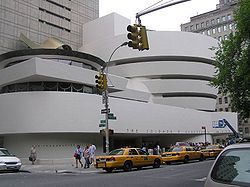This is your morning Open Thread. Pour your favorite beverage and review the past and comment on the future.
Find the past “On This Day in History” here.
October 22 is the 295th day of the year (296th in leap years) in the Gregorian calendar. There are 70 days remaining until the end of the year.
On this day in 1975,Air Force Sergeant Leonard Matlovich, a decorated veteran of the Vietnam War, is given a “general” discharge by the air force after publicly declaring his homosexuality. Matlovich, who appeared in his air force uniform on the cover of Time magazine above the headline “I AM A HOMOSEXUAL,” was challenging the ban against homosexuals in the U.S. military. In 1979, after winning a much-publicized case against the air force, his discharge was upgraded to “honorable.”
Technical Sergeant Leonard Matlovich (1943 – June 22, 1988) was a Vietnam War veteran, race relations instructor, and recipient of the Purple Heart and the Bronze Star.
Matlovich was the first gay service member to fight the ban on gays in the military, and perhaps the best-known gay man in America in the 1970s next to Harvey Milk. His fight to stay in the United States Air Force after coming out of the closet became a cause celebre around which the gay community rallied. His case resulted in articles in newspapers and magazines throughout the country, numerous television interviews, and a television movie on NBC. His photograph appeared on the cover of the September 8, 1975, issue of Time magazine, making him a symbol for thousands of gay and lesbian servicemembers and gay people generally. In October 2006, Matlovich was honored by LGBT History Month as a leader in the history of the LGBT community.
Born in Savannah, Georgia, he was the only son of a career Air Force sergeant. He spent his childhood living on military bases, primarily throughout the southern United States. Matlovich and his sister were raised in the Roman Catholic Church. He considered himself a “flag-waving patriot,” but always regretted that for several years he maintained the racist attitudes he’d been exposed to as a child of the South. Not long after he enlisted, the United States increased military action in Vietnam, about ten years after the French had abandoned active colonial rule there. Matlovich volunteered for service in Vietnam and served three tours of duty. He was seriously wounded when he stepped on a land mine in DA Nang.
While stationed in Florida near Fort Walton Beach, he began frequenting gay bars in nearby Pensacola. “I met a bank president, a gas station attendant – they were all homosexual,” Matlovich commented in a later interview. When he was 30, he slept with another man for the first time. He “came out” to his friends, but continued to conceal the fact from his commanding officer. Having realized that the racism he’d grown up around was wrong, he volunteered to teach Air Force Race Relations classes, which had been created after several racial incidents in the military in the late 1960s and early 1970s. He became so successful that the Air Force sent him around the country to coach other instructors. Matlovich gradually came to believe that the discrimination faced by gays was similar to that faced by African Americans.
In 1973, previously unaware of the organized gay movement, he read an interview in the Air Force Times with gay activist Frank Kameny who had counseled several gays in the military over the years. He called Kameny in Washington DC and learned that Kameny had long been looking for a gay service member with a perfect record to create a test case to challenge the military’s ban on gays. About a year later, he called Kameny again, telling him that he might be the person. After several months of discussion with Kameny and ACLU attorney David Addlestone during which they formulated a plan, he hand-delivered a letter to his Langley AFB commanding officer on March 6, 1975. When his commander asked, “What does this mean?” Matlovich replied, “It means Brown versus the Board of Education” – a reference to the 1954 landmark Supreme Court case outlawing racial segregation in public schools. For Matlovich, his test of the military’s ban on homosexuals would be equivalent to that case. . .
From the moment his case was revealed to the public, he was repeatedly called upon by gay groups to help them with fund raising and advocating against anti-gay discrimination, helping lead campaigns against Anita Bryant’s effort in Miami, Florida, to overturn a gay nondiscrimination ordinance and John Briggs’ attempt to ban gay teachers in California. Sometimes he was criticized by individuals more to the left than he had become. “I think many gays are forced into liberal camps only because that’s where they can find the kind of support they need to function in society” Matlovich once noted.
With the outbreak of HIV/AIDS in the U.S. in the late 1970s, Leonard’s personal life was caught up in the virus’ hysteria that peaked in the 1980s. He sold his Guerneville restaurant in 1984, moving to Europe for a few months. He returned briefly to Washington, D.C., in 1985 and, then, to San Francisco where he sold Ford cars and once again became heavily involved in gay rights causes and the fight for adequate HIV-AIDS education and treatment.
During the summer of 1986, Matlovich felt fatigued, then contracted a prolonged chest cold he seemed unable to shake. When he finally saw a physician in September of that year, he was diagnosed with HIV/AIDS. Too weak to continue his work at the Ford dealership, he was among the first to receive AZT treatments, but his prognosis was not encouraging. He went on disability and became a champion for HIV/AIDS research for the disease which was claiming tens of thousands of lives in the Bay Area and nationally. He announced on Good Morning America in 1987 that he had contracted HIV, and was arrested with other demonstrators in front of the White House that June protesting what they believed was an inadequate response to HIV-AIDS by the administration of President Ronald Reagan.
On June 22, 1988, less than a month before his 45th birthday, Matlovich died of complications from HIV/AIDS beneath a large photo of Martin Luther King, Jr. His tombstone, meant to be a memorial to all gay veterans, does not bear his name. It reads, “When I was in the military, they gave me a medal for killing two men and a discharge for loving one.” Matlovich’s tombstone at Congressional Cemetery is on the same row as that of FBI Director J. Edgar Hoover.
A Website has been created in his honor and that of other gay veterans, and includes a history of the ban on gays in the military both before and after its transformation into Don’t Ask, Don’t Tell, and illustrates the role that gay veterans fighting the ban played in the earliest development of the gay rights movement in the United States.
DADT was officially ended on September 20, 2011. We still have a long way to go with equal right for our gay and transsexual brothers and sisters.

 One of the groups that
One of the groups that 

 In 1939, the Guggenheim Foundation’s first museum, “The Museum of Non-Objective Painting”, opened in rented quarters at 24 East Fifty-Fourth Street in New York and showcased art by early modernists such as
In 1939, the Guggenheim Foundation’s first museum, “The Museum of Non-Objective Painting”, opened in rented quarters at 24 East Fifty-Fourth Street in New York and showcased art by early modernists such as  Internally, the viewing gallery forms a gentle helical spiral from the main level up to the top of the building. Paintings are displayed along the walls of the spiral and also in exhibition space found at annex levels along the way.
Internally, the viewing gallery forms a gentle helical spiral from the main level up to the top of the building. Paintings are displayed along the walls of the spiral and also in exhibition space found at annex levels along the way.
Recent Comments